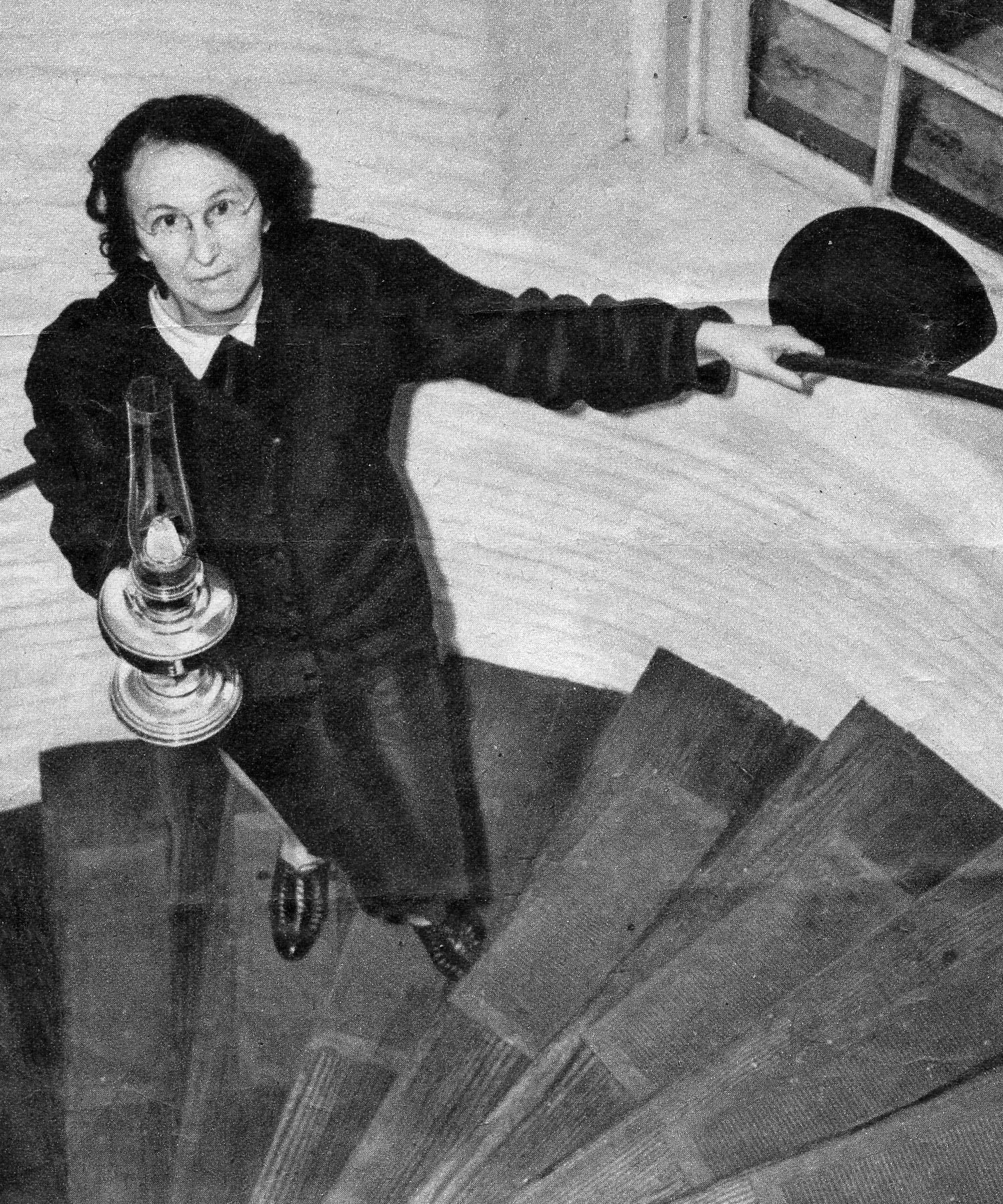Kate Walker here, keeping the light on Robbins Reef.
A reporter from the New York Times visited the lighthouse in 1906, asking me all kinds of questions about life on Robbins Reef. I told him, this lamp in this tower, it is more difficult to care for than a family of children. It need not be wound more than once in five hours, but I wind it every three hours so as to take no chances. In nineteen years that light has never disappointed sailors who have depended on it. Every night I watch it until 12 o clock. Then, if all is well, I go to bed, leaving my son Jacob in charge. Jacob was appointed assistant keeper in 1896.

The wicks of the lamps had to be trimmed every time they were used. In winter I removed the frost from inside the glass windows of the lantern, and during snowstorms I climbed outside onto the balcony to clear the snow off of the windows. The official instructions were:
To prevent the frosting of the plate glass of lanterns, put a small quantity of glycerin on a linen cloth and rub it over the inner surface of the glass. One application when the lamp is lighted and another at midnight will generally be found sufficient to keep the glass clear during the night.
Sperm oil became expensive in mid-century, and many lighthouses switched to lard oil. Kerosene proved a much cleaner illuminant, and many lighthouses switched to kerosene in the 1880s. An incandescent oil vapor lamp was very similar to the Coleman lantern that many people take camping.


Until 1943, when electricity was installed at Turkey Point, Fannie Salter made four or five trips daily to the top of the tower. When a 100-watt electric bulb was placed inside the Fresnel lens, increasing the light to 680 candlepower, the keeper’s time-consuming duties were reduced to the mere flip of a switch. Then one trip a day up the tower kept the light in working order. Only during cold weather were additional trips necessary to defrost the large windows surrounding the light. The heavy brass oil lamps used earlier were kept in readiness in case the electric power and auxiliary generator malfunctioned.
In my years at Robbins Reef I switched from lighting kerosene lamps with matches to pumping up an incandescent oil vapor lamp to switching on electricity. The Light-House Board began experimenting with electric light at the nearby Statue of Liberty and Sandy Hook East Beacon in the 1880s, and after 1900 gradually converted those lighthouses that were near power lines.
************
 Information is from National Archives, Record Group 25 Entry 3 (NC-63); 1902 Instructions to Light-Keepers, p. 21; Clifford, Women Who Kept the Lights, p. 206.
Information is from National Archives, Record Group 25 Entry 3 (NC-63); 1902 Instructions to Light-Keepers, p. 21; Clifford, Women Who Kept the Lights, p. 206.

Candace was the US Lighthouse Society historian from 2016 until she passed away in August 2018. For 30 years, her work involved lighthouse history. She worked with the National Park Service and the Council of American Maritime Museums. She was a noted author and was considered the most knowledgable person on lighthouse information at the National Archives. Books by Candace Clifford include: Women who Kept the Lights: a History of Thirty-eight Female Lighthouse Keepers , Mind the Light Katie, and Maine Lighthouses, Documentation of their Past.


These are just EXCELLENT. Please keep them coming. I will be speaking to a group at the University of Wisconsin-Milwaukee on March 4th (m birthday in fact) and will definitely include these great stories and pictures of women keepers.
Good to meet Jeff Gales at North Point Lighhtouse on the Land’s End day.
John Enright
http://www.northpointlighthouse.org
http://www.wmhs.org
Curator Emeritus at both places
262-323-1789 iPhone
These are just EXCELLENT. Please keep them coming. I will be speaking to a group at the University of Wisconsin-Milwaukee on March 4th (m birthday in fact) and will definitely include these great stories and pictures of women keepers.
Good to meet Jeff Gales at North Point Lighhtouse on the Land’s End day.
John Enright
http://www.northpointlighthouse.org
http://www.wmhs.org
Curator Emeritus at both places
262-323-1789 iPhone